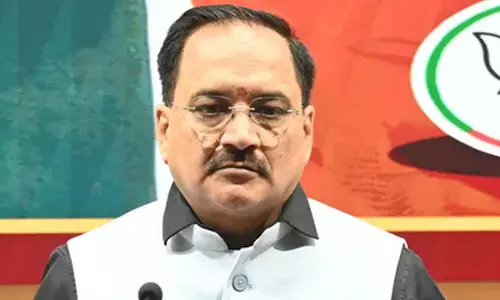SHGs falter on loan repayment

Poor economic conditions, non-cooperation among members, expenses incurred on marriages, social ceremonies and medical emergencies are some of the factors that have turned the loans extended to the Self-Help Groups (SHGs) non-performing assets (NPAs).
Hyderabad: Poor economic conditions, non-cooperation among members, expenses incurred on marriages, social ceremonies and medical emergencies are some of the factors that have turned the loans extended to the Self-Help Groups (SHGs) non-performing assets (NPAs).
A study on NPAs of bank loans to SHGs–Bank Linkage Programme (SHG-BPL) found several factors causing their growth.
It may be mentioned here that the SHG-BLP is regarded as the largest microfinance programme in the world, extending collateral-free loans to 50.77 lakh SHGs to the extent of Rs 87,098 crore as on March 31, 2019.
However, very few studies have so far been conducted to figure out the impact. This made the National Institute of Rural Development and Panchayat Raj and National Bank for Agriculture and Rural Development (NIRDPR and NABARD) commissioning a study on the NPAs of SHG-BLP in Andhra Pradesh, Odisha and Madhya Pradesh.
Director-General of NIRDPR, Dr WR Reddy said the last mile financial connectivity for financial inclusion had picked up when the NABARD pioneered SHG-BLP in 1992.
What was started as a bank outreach programme, the SHG-BLP transcended itself into a holistic programme for building human, social, economic, and of late, technological capital in rural India.
It is more than a quarter century since its launch. "Performance of the programme needs a review. Hence the NIRDPR has taken up the study," he added.
Dr Reddy said the research study titled 'An Evaluation of the Self-Help Group-Bank Linkage Programme (SHG-BLP) with special reference to its Loan Portfolio and Asset Quality."
The prime objective set for the study was to find the main reasons behind the growing level of NPAs in the SHG-BLP and sample includes different stakeholders in the SHG-BLP.
Dr M Srikanth, Associate Professor and Head, Centre for Financial Inclusion and Entrepreneurship, said the SHG-BLP witnessed lower loan defaults in the initial years of the scheme.
But the bad loans kept mounting in the recent past due to various reasons. "The SHG-BLP NPAs have peaked to a record high of 7.4 per cent in the financial year 2014-15 and slightly come down to 5.19 per cent by March 31,2019," he added.
The study assessed various aspects of credit linkage, the income-generating capacity of the SHG members, asset quality of the loan portfolio of the SHG-BLP, both in quantitative and qualitative terms.
Further, economic indicators like income, expenses, savings, loans and investments, end-use of loans, various factors behind the growing NPAs in the SHG-BLP.
Besides, it has also gone through the observance of the Pancha Sutras by the SHGs. They include regular meetings, regular savings, regular internal lending, and regular repayment and regular book-keeping.
















